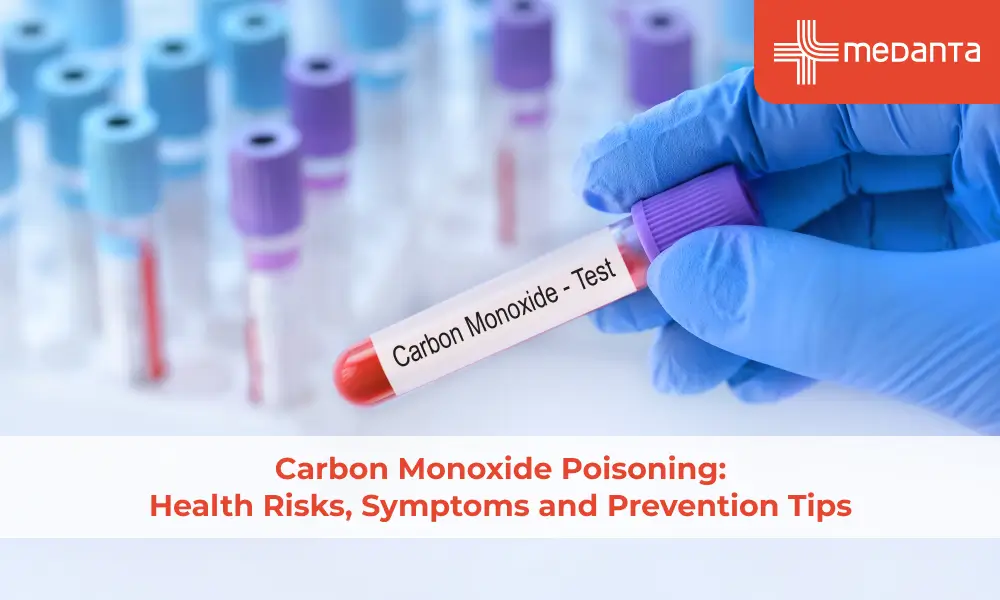THE EXCHANGE | Newsletter November 2022

Medanta’s continuous efforts to deliver internationally benchmarked standards of healthcare have been recognised by the Joint Commission International (JCI) - a global authority in healthcare quality assessment.
We will continue to deliver advanced healthcare through multi-disciplinary teams of experienced doctors and latest medical technology in a safe environment.
Video-Assisted Thoracic Surgery for Lung Cancer
A 63-year-old male patient came to Medanta- Gurugram with hemoptysis (blood in sputum). His Computed Tomography (CT) scan evaluation revealed a mass lesion in the right upper lobe. He was further evaluated with CT-guided biopsy, which was suggestive of adenocarcinoma of the right upper lobe. Positron Emission Tomography- Computed Tomography (PET-CT) was suggestive of localised disease in right upper lobe of size
2.8cmx2cm without fluorodeoxyglucose (FDG)-avid mediastinal lymph nodes. The case was discussed in the Medanta Tumor Board, which decided to proceed with surgical intervention.
After extensive work-up and necessary clearances, the patient underwent video-assisted thoracoscopic surgery (VATS) right upper lobectomy with systematic mediastinal lymph node dissection
under general anesthesia. He had an uneventful post-operative course and was discharged on Day 4.
At the time of discharge, his post-operative chest X-ray showed satisfactory lung expansion, and he was able to climb 4-5 flights of stairs without any breathing difficulty.
Surgery plays a very important role in the management of early stage lung cancer. Traditionally, lung cancer surgery required open thoracotomy with its attendant morbidity of pain. However, recently, VATS is being increasingly done for treatment of early lung cancer and has shown superior outcomes. In VATS cases, as compared to open surgery, the team from the Institute of Chest Surgery, Medanta, has observed that there is reduced postoperative pain.
This shows that the general perception in the medical fraternity regarding the difficulty of VATS in lung cancer owing to adhesions in Indian patients due to endemicity of tuberculosis and the fear of oncological inadequacy is unfounded. It is observed that in experienced, high-volume centers, surgical and oncological outcomes comparable to international standards can be achieved with VATS. Therefore, early diagnosis and timely treatment after a thorough multidisciplinary assessment offer hope of improving the survival rates of lung cancer patients.
Minimally invasive surgical techniques, such as VATS, should be used wherever feasible for better outcomes and improved quality of life. Due to itslower morbidity, VATS has even helped in including
patients with borderline fitness - those who would have otherwise been deemed medically inoperable – into the purview of surgery, giving them a chance to live longer.
The team at Medanta has operated upon many cases wherein patients reported being denied surgery earlier, but they were managed successfully with VATS at Medanta. This case exemplifies a similar experience wherein Medanta successfully managed the patient with VATS.
Newborn with Non- Immune Hydrops Fetalis Saved at Medanta
Hydrops fetalis is a very serious life-threatening condition characterised by abnormal collection of fluid in two or more fetal body compartments. This is not a disease but rather a symptom of an underlying health problem that affects the fetus. If left untreated, the excess fluid can stress the fetal heart and other vital organs, and can lead to fetal death or put the newborn’s life at risk.
Hydrops fetalis may result from a wide range of conditions with varying pathophysiologies, each with the potential to severely affect the fetus. It is divided into two categories, namely immune and non-immune. If found in association with red cell alloimmunisation, it is termed immune hydrops fetalis. Otherwise, it is called non-immune hydrops fetalis.
Immune hydrops or erythroblastosis fetalis, results from antibodies in the maternal circulation that pass through the placenta and react with the fetal antigens resulting in fetal hemolysis. Non-immune hydrops results from causes other than antigen- antibody reactions and is associated with very poorprognosis, and the mortality is as high as 50%.
The prevalence of non-immune hydrops fetalis
(NIHF) ranges from 1 in 1,500 to 1 in 4,000 births with a wide variation in the reported prevalence. NIHF accounts for approximately 80%-90% of all cases of the condition. It occurs when an underlying disease, genetic disorder, or birth defect interferes with the fetal body’s ability to manage fluid. NIHF can result from many underlying conditions, such as cardiac disease, chromosomal anomalies, lymphatic disease, infections, metabolic disease, tumors and maternal diseases, besides many more. The pathophysiology of NIHF varies and mainly depends on the underlying cause. Similarly, the prognosis also depends on the underlying cause, such as gestational age at the time of the diagnosis, time of delivery, amount of fetal edema, and intrauterine interventions.
Case Study
A male baby was delivered at Medanta-Lucknow to second gravida mother with history of acute pancreatitis and subacute intestinal obstruction on multiple antibiotics. Her latest ultrasound at 38 weeks of gestation was showing anhydramnios and minimal fetal ascites. Hence, she was undertaken for emergency lower (uterine) segment caesarean section (LSCS). Baby was born via vertex presentation with meconium-stained amniotic fluid. Baby did not cry immediately after birth and required delivery room resuscitation in the form of intubation and positive pressure ventilation.
After successful resuscitation, baby was shifted to newborn intensive care unit (NICU) of Medanta- Lucknow. Baby was usages for gestation age. On examination, he was found to have decreased
breath sound on bilateral basal regions on chest and enlarged liver with palpable left lobe. Baby was mechanically ventilated because of poor respiratory efforts, with high oxygen requirement. He had labile saturations with pre and post-ductal difference. Hence, he was managed as persistent pulmonary hypertension of newborn (PPHN) and started on inotropic support of dobutamine, noradrenaline and milrinone.
The clinical findings were confirmed by echocardiography (ECHO). Chest X-ray and ultrasound showed bilateral minimal pleural effusion, and ultrasound abdomen was suggestive of enlarged liver and ascites. ECHO confirmed the findings of PPHN, along with right ventricular dysfunction. Baby was kept on ventilatory support for 3 days and extubated to non-invasive mechanical ventilation (NIMV) as his efforts improved, and then shifted to room air over the next 3 days. Inotropic support was required for 4 days, and gradually tapered off and stopped.
Baby was kept nil per oral initially and started on totalparenteralnutritionthroughcentralline.Fluids
were restricted initially because of hydrops. Feeds were started on Day 3 of life and gradually built up to full feeds. He was given antibiotics for suspected sepsis, but stopped after 7 days as cultures were sterile. A direct Coombs Test was negative and the mother and the baby, both, were Rh-positive. Thus, the baby was managed as a case of non-immune hydrops. On further work up for non-immune hydrops, the baby and the mother’s serologic tests for toxoplasma, syphilis, rubella, cytomegalovirus, and herpes simplex (TORCH) titers were negative, and the baby’s ammonia level was normal. This was followed by extended newborn screening, which was also normal and was not suggestive of any metabolic disorders. A repeat ultrasound scan showed that the ascites and effusion were also resolved.
The cause of NIHF was attributed to maternal infection, as reported in many previous case reports, in the presence of underlying maternal sepsis. The baby was discharged in a healthy condition on Day 11 of life.
Careful evaluation and monitoring, and effective resuscitation techniques are essential in improving the survival rate in affected neonates. Postnatal management includes initial resuscitation, identification, and treatment of the underlying cause. Most of the infants with hydrops fetalis require endotracheal intubation because of respiratory depression. Thoracentesis, paracentesis, and sometimes cardiocentesis are performed if the neonate presents with pleural effusion, ascites, and pericardial effusion.
Hence, for patients with hydrops fetalis, delivery should be performed in a tertiary care center with neonatal intensive care unit (NICU) in the presence of an experienced neonatal team as immediate resuscitation and proper postnatal care is needed for newborn babies in such cases.
A Rare Case with Double Whammy of Cardiac Fever with Coronary Ischemia
Coronary artery stent infection is a rare complication following angioplasty and can present as mycotic coronary artery pseudoaneurysm, pericarditis or exudative effusion. It results typically from either direct stent contamination at the time of delivery or transient bacteraemia from access site. We describe the diagnosis and successful management of one such case of life-threatening complication presenting with fever of unknown origin along with ischemic anginal symptoms.
A 63-year-old diabetic male patient presented to Medanta-Lucknow with high-grade fever along with recurrent rest angina for 3 weeks. One month prior, he had undergone primary percutaneous transluminal coronary angioplasty (PTCA) with a drug eluting coronary stent placement in theproximal left anterior descending (LAD) for anterior wall myocardial infarction at a peripheral centre. His routine fever workup was negative with elevated C-reactive protein (CRP) - 83.9mg/L (0-5 mg/L) and procalcitonin - 0.15ng/ml (0-0.05ng/ml). High sensitivity troponin I test was also mildly positive - 324.7ng/L (Up to 12ng/L). A presumptive diagnosis of systemic bacterial infection was made and empirical antibiotics were started as blood reports were pending. Echocardiography showed left ventricular (LV) apical hypokinesia with preserved ejection fraction along with pericardial effusion of 9mm localised posterior, and lateral to left ventricle. A computed tomography (CT) coronary angiogram was suggestive of aneurysm at the proximal edge of the stent along with intraluminal hypo-density and poor contrast opacification inside the stent with 80% luminal stenosis. Hence, thrombus was suspected. It also showed mild free fluid and pericardial fat stranding adjacent to stent.
An invasive coronary angiography revealed a large outpouching of 5mm from the proximal edge of the stent and a small saccule of 2mm in the distal part of the stent, which was suggestive of stent pseudoaneurysm along with 95% stenosis at the distal stent edge. Blood cultures were positive for Pseudomonas aeruginosa sensitive to meropenem and ciprofloxacin.
The patient underwent ligation and exclusion of the stented coronary segment with coronary artery bypass graft surgery (CABG), left internal mammary artery (LIMA) to LAD and saphenous venous graft to first diagonal [D1] branch.
The patient had a good recovery with resolution of fever and angina, and was discharged on intravenous antibiotic therapy for 2 weeks. He is doing well 6 months post-surgery with no recurrence of fever or angina and maintains a productive life. Non-invasive stress testing 6 months post discharge shows no inducible ischemia or residual pericardial effusion.
The first reported case of an infected coronary artery stent was in 1993. Although this is an exceedingly rare event, the associated mortality is alarmingly high. Stent infection can occur early (less than 10 days) or late (after 10 days or longer) following coronary angioplasty.
In patients who have had a coronary artery stented, the presence of angina and fever should make the clinician suspicious for a stent-related infection.Diagnosis of this entity is difficult and requires a high index of suspicion and timely management to prevent an otherwise fatal outcome. Irrespective of time of presentation, the majority of stent infection with coronary aneurysm must be treated by surgical extraction of the stent with aneurysm repair, or ligation and exclusion of the stented segment with simultaneous intravenous antibiotic therapy.






